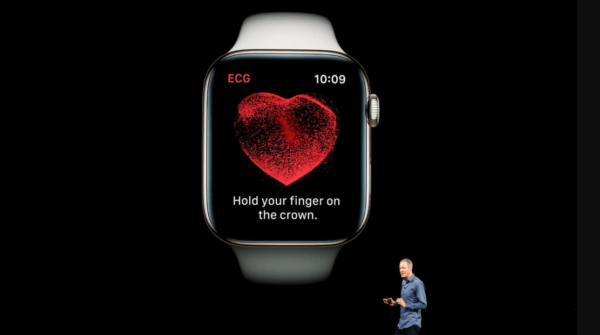|
Mental Health Mega-Merger | Apple Takes a Step Back
August 25, 2021
|
|
|

|
|
Together with
|

|
|
|
“The mental health crisis can’t be solved by simply hiring more therapists or moving care online.”
|
|
Russell Glass, CEO of Ginger
|
|

|
|
At a time when mental health problems are rapidly escalating, Headspace and Ginger have a solution: mega-merger.
Meditation app Headspace is merging with teletherapy platform Ginger to create a combined company called Headspace Health. The agreement values the joint venture at $3b (10x this year’s expected revenue) and will give Headspace Health the ability to begin offering affordable mental health services to over 100 million people globally.
- Headspace – The company is best known as one of the first guided meditation apps and remains a leader in mindfulness training. Headspace has partnerships with many consumer-favorite brands such as Netflix and Spotify, giving many of those suffering from anxiety and depression their first exposure to accessible care.
- Ginger – Ginger offers its members access to mobile-first mental healthcare, including behavioral health coaching and telehealth therapy. It has an on-demand, team-based care model, giving users 24/7 access to therapists.
- Headspace Health – The newly formed company will blend Headspace’s 65m+ user base with Ginger’s evidence-based interventions, creating an easy way for patients to improve their well-being from a unified platform. Headspace Health will also have one of the world’s largest mental health data sets, which it will leverage to deliver highly personalized care.
Industry Impact
Headspace Health plays at the intersection of the mental health crisis and telemedicine, two areas that have been attracting significant investor attention. With so much capital flowing into the space, consolidation was soon to follow, and this merger could kick off a wave of similar deals involving other popular meditation apps such as Calm.
Competing acquisitions aren’t the only change foreshadowed by the merger. Headspace Health was originally the name of Headspace’s 2018 digital therapeutic product that failed to receive FDA approval, and it’s now easier to see how federal clearance, and reimbursement, could be on the horizon.
|




|
|

|
|
According to a new report from Business Insider, Apple is scaling back its internal HealthHabit app that let employees track their fitness, talk to clinicians, and manage hypertension.
HealthHabit was one of Apple’s largest projects resulting from a partnership with AC Wellness, a primary care provider for employers and families. Unnamed sources at Apple stated that HealthHabit was intended for a consumer launch if successful internally, which… it apparently wasn’t.
Although the project was the focus of more than 50 employees, it struggled with user engagement, a problem all too familiar to those working on digital health products.
- The Strategy – Apple’s healthcare ambitions are apparent in its products, with the company incorporating a medical-grade EKG in the Apple Watch and data-sharing for clinical trials through the iPhone Health app. HealthHabit’s roadmap likely resembled that of Amazon Care, which began as an employee-only primary care app before expanding nationwide earlier this year.
- The Trend – Apple’s news follows just days after Alphabet reported that it was dismantling Google Health and reorganizing its healthcare projects to be closer to their team-specific specialties (e.g. Health-AI moves within AI group). Sometimes taking a step back is the best way to move forward, and Apple’s recent moves are far from the end of its healthcare strategy.
The healthcare history books are filled with would-be disruptors who seemed to have everything they needed (excellent teams, funding, strong industry connections), but few if any have had the bottomless warchest of capital and talent commanded by Apple.
While the moat around healthcare is incredibly wide (entrenched tech/vendors, complex datasets, demanding users), the same could be said about the smartphone market circa 2008.
Despite this step back, if any industry needs a disruptor, it’s healthcare – and if any consumer brand is going to pull it off, it’s Apple.
|




|
|
Nuance’s Patient Engagement Must-Haves
Consumer demands are shifting, and they’re looking to get more out of their digital health technology. Nuance outlines the 5 must-haves for your patient engagement strategy here.
|
|
- In the Spotlight: Mayo Clinic’s Advanced Care at Home program recently received mainstream media coverage on NBC’s Today Show, which highlighted the story of a Navy veteran with rheumatoid arthritis enrolled in the system. The segment painted a rosy picture of remote care, including a Mayo-provided home tech makeover (new modem, iPad, monitors), up to 30% cost savings for patients, and a 40 person command center of hospital staff akin to what you’d expect for a NASA mission. While Mayo’s robust program might inflate the expectations of some viewers, the segment did a great job of highlighting the possibilities of remote care.
- A Long Strange TRIPP: VR psychedelic imagery platform TRIPP recently acquired PsyAssist to incorporate the company’s treatment protocols for ketamine-assisted therapy and psilocybin clinical trials with its existing alternate reality immersion program. Psychedelic experiences are often overwhelming and challenging to navigate (according to researchers), and TRIPP believes that combining new therapy protocols with its audio/visual platform will help patients feel less anxiety and better integrate their experiences following treatment.
- Pediatric Telehealth: A new Nemours Children’s Health and Amwell survey found that nearly 80% of parents have now accessed pediatric telehealth services, compared to 35% prior to the pandemic (n = 2,000). Parents have historically been wary of trusting their children’s health to online platforms, but the survey results are a strong indicator that this sentiment has been shifting. Almost 90% of parents stated that telehealth allows them to be more involved in their child’s health compared to in-person-only care, including nearly 30% who had never used the service in the past.
- Rare Disease Funding: Rare disease research platform AllStripes recently raised a $50m Series B round ($67m total funding) that it will use to launch an ambitious 100 new research programs and improve its user experience for patients submitting their medical records to be de-identified for use in clinical trials. Company founder Onno Faber, who has neurofibromatosis type 2 (affects 1 in 33k people), is aiming to improve outcomes for those dealing with the 95% of rare diseases still lacking clinical treatments.
- Surgical Planning: Recent findings from a Harvard study indicate that surgical plans for spine patients generated from telemedicine visits are rarely changed after in-person evaluation. Of the 33 patients included in the analysis, surgical plans documented during a virtual encounter went unchanged in 31 cases following in-person visits prior to surgery. The study suggests that telemedicine evaluations are efficient for preoperative assessment of spine patients and that there’s room to optimize patient access to care through remote creation of surgical plans.
- CLEAR for Date Night: Popular restaurant reservation platform OpenTable is partnering with biometric ID company CLEAR to allow patrons to verify their proof of vaccination when making their reservation as opposed to after arriving at the restaurant. The partnership removes the less than romantic vaccine-check from a customer’s night out while making it easier for restaurant owners to comply with the ever-shifting pandemic regulatory landscape.
- Hospital Volume: A new McKinsey survey found that emergency department and hospital inpatient/outpatient volumes have rebounded to 2019 levels in June and July and are expected to exceed those rates as early as next year. Surveyed hospital executives stated that the focus is on rising surgical volumes and shifting surgeries to an outpatient setting, a strategy that will rely on heavier implementation of remote monitoring and care-at-home solutions.
- Heart Attack App: Mount Sinai Queens Emergency Department doesn’t have a catheterization lab for heart attack patients, and Mount Sinai Hospital’s cath lab is a traffic-filled 6-mile drive away. To improve outcomes for the 150 annual cath lab transfers, the Mount Sinai Health System developed an mHealth app that allows ED physicians to alert the hospital of an incoming transfer and share patient info directly through the app. This typically requires multiple calls between different departments before the cath lab can be prepped, but the new app saves ~30 minutes during this critical transfer interval.
- Ignoring Telehealth Scalability: A new meta-study published in JMIR Mhealth Uhealth evaluated 13 articles focusing on factors relevant to telemonitoring scalability factors. The included studies considered scalability domains such as the problem (13), intervention effectiveness (13), and cost/benefit (10), but rarely considered scale-relevant issues such as workforce needs (4) and technology infrastructure requirements (3). The review suggests that researchers primarily select domains related to the intervention while ignoring scalability concerns related to contextual, technological, and environmental factors.
- Covera Series C: Healthcare quality analytics provider Covera Health recently raised $25m in Series C funding ($57m total funding) to scale its Radiology Centers of Excellence (CoE) program and expand the solution into new specialties. The CoE program aims to reduce medical errors through AI-powered insights, a solution that helps payers reduce medical expenses related to unnecessary care and will likely be an asset to value-based care models treating other conditions as the company grows.
|
|
|
|
|